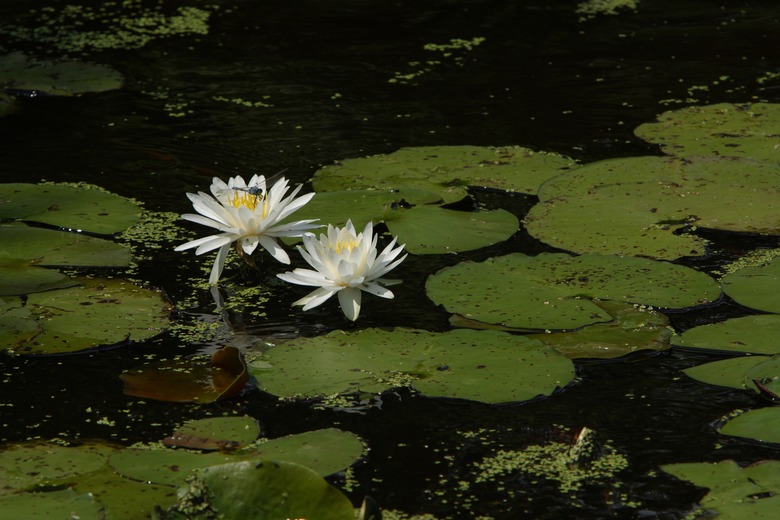Lotus Flower Growth
Step 1
For lotus flowers to grow properly, they require certain elements. As with other aquatic plants, the lotus requires environments with abundant moisture, such as swamps and the edges of ponds and lakes. These tropical plants require temperate climates and may fail to produce flowers in temperatures that don't rise above 75 degrees Fahrenheit. Lotus plants grow best in USDA Plant Hardiness Zones 9 through 12. They prefer locations with full to partial sun exposure.
Early Growth
Step 1
Lotus plants grow from underwater tubers. The root system does not include a taproot but forms thin root strings that measure approximately 11 centimeters long. Lotus are clump-forming plants that spread from their submerged root systems. During the seedling stage of growth, the lotus forms a long stem that reaches toward the surface of the water. As the leaf nodes begin to appear, the stem falls downward to rest against the mud. The long leaf nodes extend upward, allowing the broad leaves to float on the surface of the water, while the underwater roots help anchor the plants in place.
Step 2
- For lotus flowers to grow properly, they require certain elements.
- As the leaf nodes begin to appear, the stem falls downward to rest against the mud.
Blossom Development
Step 1
The mature seedling stage lasts until the blossoms begin to form on the lotus plant. It takes lotus plants about a month from the time of planting to begin blossoming. The flowering process lasts for approximately two months. The lotus blossoms form on long stems that rise above the surface of the water and the floating leaves. The blossoms can vary in appearance, depending on the particular variety. They range in fullness from single petals to double petals and blossom in a variety of colors, including yellow, pink, red and white.
Reproduction
Step 1
Lotus plants spread and reproduce through root division and seed formation. Although they may reseed themselves, the most common way to propagate lotus is by pulling up the underground roots and tubers in the fall and separating them into smaller clumps. In cooler climates, you can store these uprooted tubers over the winter and plant them again in the springtime. Lotus plants grow quickly, completing their entire growth and reproductive cycles during a single season.
Step 2
- The mature seedling stage lasts until the blossoms begin to form on the lotus plant.
- The lotus blossoms form on long stems that rise above the surface of the water and the floating leaves.
References
- Auburn University: Lotus of China
- "Waterlilies and Lotuses"; Perry D. Slocum; 2005
